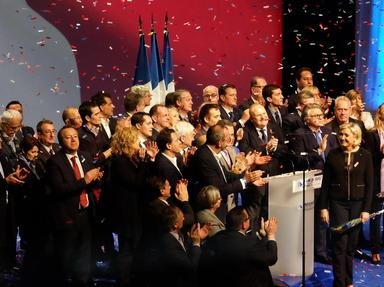Quiz Answer Key and Fun Facts
1. Before the adoption of the Twelfth Amendment, each US elector got two votes, and the candidate with the second-most votes became vice president. This system was not designed with political parties in mind, which complicated the 1796 election. How many electors voted for both the winning presidential and vice presidential candidates?
2. The main Democratic-Republican candidates in 1800 were the same as in 1796, and Thomas Jefferson and Aaron Burr both received 73 electoral votes, sending the election to the House of Representatives. For the first 35 ballots, neither candidate received a majority of states. Who is generally credited with breaking the deadlock?
3. In 1820, James Monroe (a Democratic-Republican) won all but one electoral vote. Who was the Federalist candidate?
4. In 1824, no presidential candidate received a majority of electoral votes, and John Quincy Adams ended up winning in the House of Representatives. Why did John Calhoun win the vice presidency without a similar process?
5. In 1836, Martin Van Buren won the presidency relatively easily. However, his running mate Richard Johnson did not receive a majority of electoral votes. How was he chosen as vice president?
6. In 1876, Rutherford Hayes defeated Samuel Tilden for president, even though Tilden received a majority of popular votes. Which of these states did NOT have disputed results, despite only recently having become a state?
7. It is well known that Grover Cleveland served non-consecutive terms, losing the election in 1888 to Benjamin Harrison. Why didn't his first vice president, Thomas Hendricks, run again in 1892?
8. In 1912, Theodore Roosevelt was upset with incumbent William Howard Taft, so created the Progressive Party (or Bull Mouse party) to run for president. This split in the Republican Party basically handed the election to Woodrow Wilson. Which of these states voted for president for the first time in 1912?
9. Probably the most controversial thing about the 1972 election was the break-in at the Watergate complex. Richard Nixon defeated George McGovern in a landslide, 520 to 17. However, one faithless elector cast his ballot to Libertarian John Hospers and his running mate. Who was the first woman to receive an electoral vote in a presidential election? (Hint: She shares her first name with a Byzantine empress)
10. In the 2000 election, George W. Bush defeated Al Gore, with the controversial election in Florida going to Bush. In Palm Beach County, what Reform Party candidate received 3407 votes (0.8%), many of which were probably intended for Gore?
Source: Author
TimBentley
This quiz was reviewed by FunTrivia editor
stedman before going online.
Any errors found in FunTrivia content are routinely corrected through our feedback system.
